Low carbon steel, or mild steel, boasts low carbon content offering ductility, machinability, and weldability, making it cost-effective and versatile. Used in various applications like pipes, automotive parts, and machinery components, it possesses up to 0.5 wt% carbon content. Mild steel, with 0.05-0.25 wt% carbon, is less strong but more ductile. Ideal for welding, mild steel exhibits better corrosion resistance. Its microstructure of ferrite and pearlite enhances corrosion resistance and mechanical properties. Low carbon steel pipes, essential in industries, provide durability and sustainability. Surface treatments like plastic spraying bolster corrosion resistance. Specializing in unique projects, low carbon steel offers tailored solutions.
Key Takeaways
- Low carbon steel is versatile, cost-effective, and commonly used in pipes, automotive parts, and machinery components.
- It has a carbon content up to 0.5 wt%, offering high ductility, toughness, machinability, and weldability.
- Low carbon steel pipes are crucial for durability, efficiency, and sustainability in fluid transportation and structural construction.
- Surface treatments like plastic spraying enhance corrosion resistance, making low carbon steel pipes ideal for harsh conditions.
- Custom fabrication options provide tailored solutions for unique projects, ensuring cost-effectiveness and reliability.
What is low carbon steel
Low carbon steel, also known as mild steel, contains a relatively low amount of carbon compared to other steel grades. This type of steel is characterized by its ductility, machinability, and weldability, making it suitable for a wide range of industrial applications.
Due to its cost-effectiveness and versatility, low carbon steel is commonly used in the manufacturing of pipes, automotive parts, construction materials, and machinery components.
Introducing the basic concepts of carbon steel pipe
Carbon steel pipes are a fundamental component in various industries. They are distinguished by their carbon content, which plays a crucial role in their mechanical properties and applications.
When it comes to surface treatment, carbon steel pipe plastic spraying is a key technology utilized for enhancing corrosion resistance, wear resistance, and aesthetics. This process involves applying plastic powder onto the pipes through spray coating methods like cold spray. The coating thickness typically exceeds 0.5mm.
Prior to spraying, surface treatment is essential to eliminate impurities, while curing treatment, involving heating and cooling, is necessary for creating a protective layer.
Industries such as petroleum, chemical, and electric power extensively benefit from this spray coating technology to protect pipelines, equipment, and structures.
Low carbon steel is widely used in industry
With its widespread utilization across various industries, low carbon steel stands out as an essential material due to its distinct properties and versatile applications. Low carbon steel, characterized by a carbon content of 0.25 wt.%, exhibits a microstructure comprising ferrite and pearlite. It boasts properties such as low hardness and cost, high ductility, toughness, machinability, and weldability.
This type of steel finds extensive use in industrial applications such as automobile components, structural shapes, pipes, construction, and food cans. Its excellent corrosion resistance, coupled with suitable mechanical properties, makes it a preferred choice for fabrication techniques in various sectors. Overall, low carbon steel plays a pivotal role in ensuring the efficiency and durability of numerous products in the market.
Low carbon steel vs mild steel
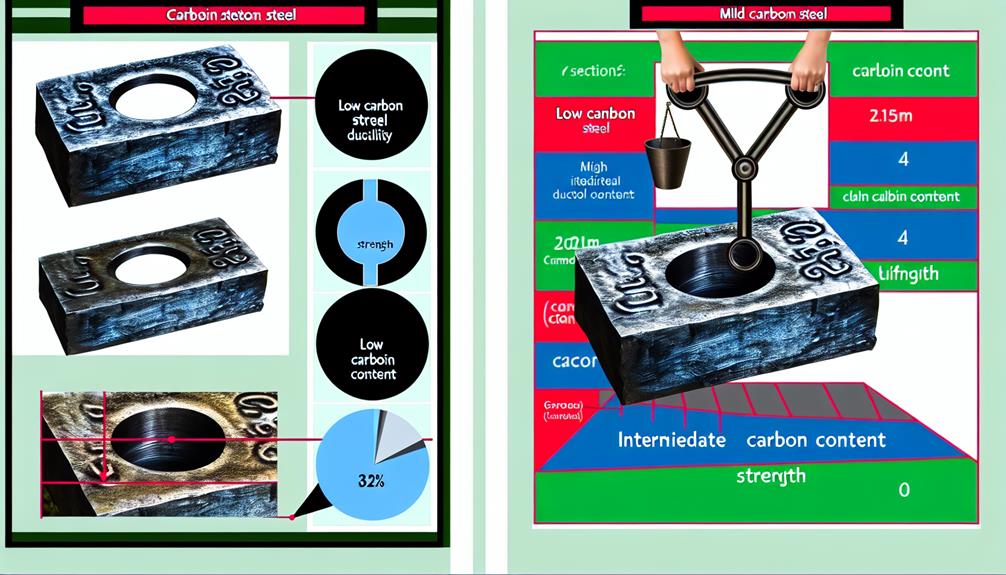
Considered one of the most economical types of steel, mild steel is commonly utilized in various industrial applications due to its specific composition and properties. Mild steel, also known as low carbon steel, contains a low carbon content typically around 0.05-0.25 wt%, which gives it good ductility and ease of forming.
In comparison, low carbon steel contains slightly higher carbon content, up to 0.5 wt%. This small difference affects the mechanical properties, making low carbon steel slightly stronger but less ductile than mild steel.
When it comes to weldability concerns, both mild and low carbon steel are relatively easy to weld using common techniques. However, mild steel generally exhibits better corrosion resistance due to its lower carbon content.
Heat treatment can further enhance the mechanical properties of both types of steel, with mild steel responding well to processes like annealing, while low carbon steel benefits from normalizing or thermomechanical treatments for improved strength and toughness.
Introduce of low carbon steel
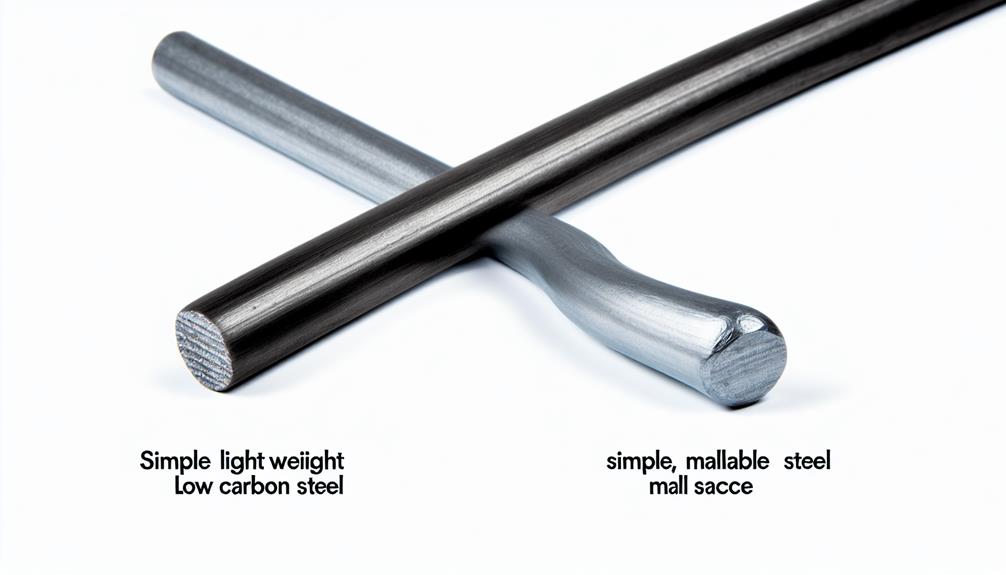
Low carbon steel is characterized by a low amount of carbon content. It plays a vital role in various industries due to its unique properties. Understanding the components, manufacturing process, and common types of low carbon steel pipes is essential in grasping its significance.
Define low carbon steel pipes and its main components
Low carbon steel pipes are known for their versatility and durability, consisting primarily of iron and a low amount of carbon as their main components. These pipes are commonly produced through a process that involves melting iron and carbon together, followed by shaping the molten metal into the desired pipe form.
Low carbon steel pipes come in a wide range of sizes to suit various industry applications, including plumbing, construction, and automotive manufacturing. When considering purchasing factors for low carbon steel pipes, it is essential to evaluate the specific requirements of the intended use, such as pressure rating, corrosion resistance, and environmental conditions, to make sure the most suitable product is selected for the job.
Manufacturing Process and Common Types of Low Carbon Steel Pipe
The manufacturing process of low carbon steel pipes involves a series of precise steps to create high-quality products that meet industry standards and requirements. To achieve this, several key factors are considered:
-
Heat Treatment: Controlled heating and cooling processes to adjust the properties of the steel.
-
Welding Techniques: Various methods like arc welding or resistance welding are used to join the pipes.
-
Corrosion Resistance: Coatings or alloying elements are applied to enhance the pipes’ resistance to corrosion.
-
Surface Finishing: Processes such as polishing or painting are employed to improve aesthetics and durability.
These steps guarantee that the low carbon steel pipes have excellent mechanical properties and meet the necessary industry standards.
Why low carbon steel pipes are so important in various industries
With its advantageous properties and versatile applications, low carbon steel pipes are vital components in various industries worldwide. Their importance lies in their durability, efficiency, and sustainability.
Low carbon steel pipes are known for their cost-effectiveness and reliability, making them a preferred choice for many applications. The versatility and strength of these pipes make them suitable for a wide range of industrial uses.
Their impact is significant, as they are used in diverse applications such as transportation of fluids, structural support, and heat transfer systems. Overall, low carbon steel pipes are indispensable in industries due to their exceptional properties and the critical role they play in ensuring the smooth operation of various processes.
Size of low carbon steel
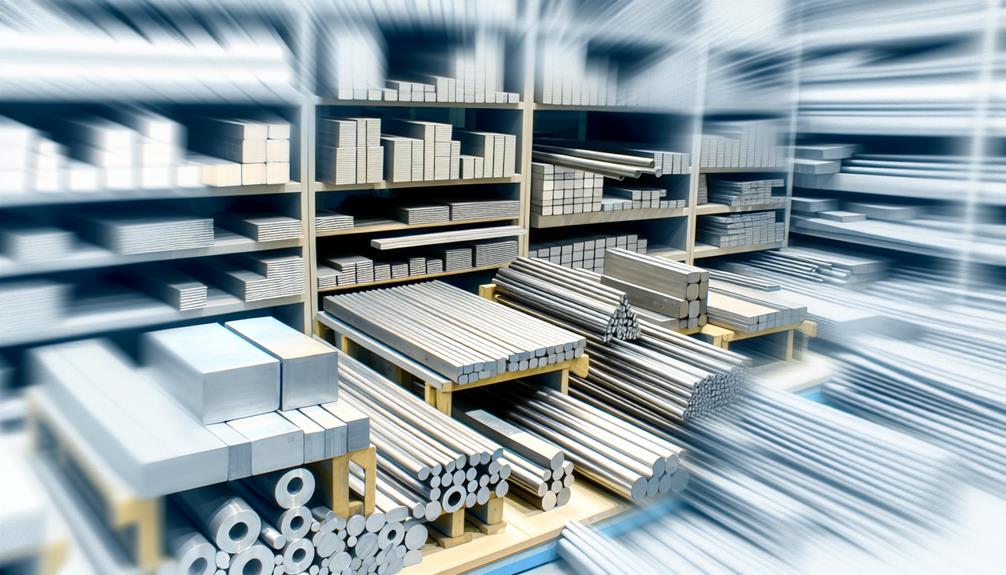
In the domain of low carbon steel, the dimension of steel tubes is a critical aspect to ponder. Different scenarios may necessitate varying sizes of low carbon steel pipes to guarantee top performance and structural integrity.
Understanding the dimensions and specifications of low carbon steel components is fundamental in engineering applications where strength and durability are crucial.
We are able to offer sizes of low carbon steel tubes
Offering a variety of sizes for low carbon steel tubes allows for versatile applications in various industries. When choosing the size of low carbon steel tubes, consider the following:
-
Tube Sizes: Select from a range of diameters and wall thicknesses to meet specific project requirements.
-
Material Properties: Low carbon steel offers outstanding strength and ductility, making it ideal for structural applications.
-
Welding Techniques: Low carbon steel tubes can be easily welded using common methods such as MIG or TIG welding.
-
Corrosion Resistance: Proper coating or painting can enhance the corrosion resistance of low carbon steel tubes.
-
Heat Treatment: Heat treatment can further enhance the mechanical properties of low carbon steel tubes for specific applications.
Choosing the right size ensures excellent performance and durability in diverse settings.
Scenarios for different sizes of low carbon steel pipes
Considering the diverse applications and structural requirements of low carbon steel tubes, the selection of appropriate sizes plays a critical role in determining the performance and functionality in various scenarios.
When it comes to corrosion resistance, smaller diameter pipes are often favored due to their higher resistance to corrosion. Welding techniques are also influenced by pipe size, with larger pipes necessitating different welding procedures than smaller ones.
Temperature variations can impact the choice of pipe size to guarantee thermal expansion is accommodated. Pressure ratings vary between different sizes of low carbon steel pipes, with larger pipes typically having higher pressure ratings.
Coating options may differ based on pipe size, with larger pipes often needing specialized coatings for enhanced protection.
Uses of low carbon steel
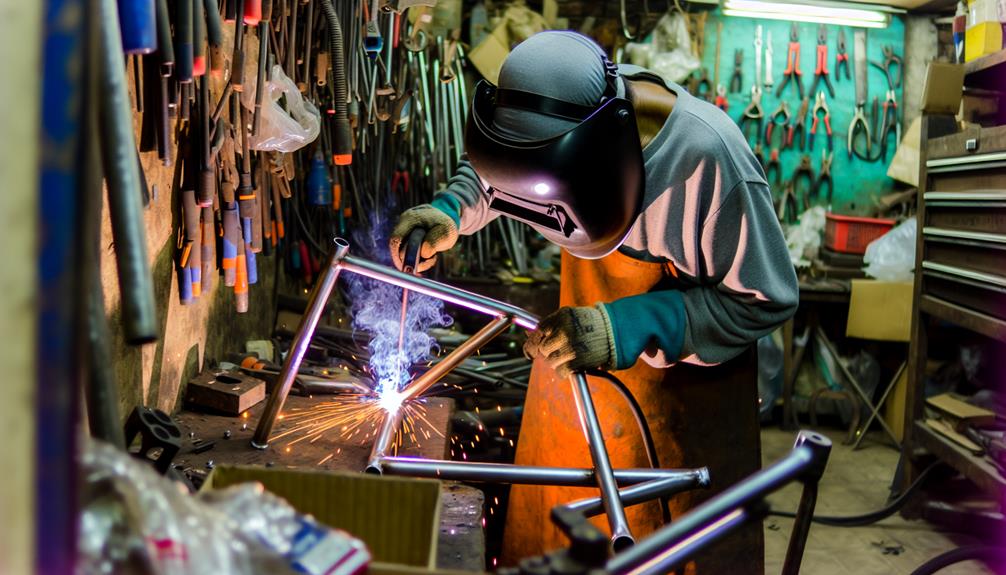
Low carbon steel finds widespread use in various industries due to its versatility and cost-effectiveness. It is commonly employed in applications such as fluid transportation, structural construction, and fabrication.
Additionally, low carbon steel pipes are utilized in special projects that require specific material properties and performance characteristics.
Typical applications for carbon steel pipes in fluid transportation, structural construction and fabrication
Carbon steel pipes are widely utilized in various industries for fluid transportation, structural construction, and fabrication purposes due to their durability and versatility.
-
Fluid Transportation: Carbon steel pipes are commonly used in oil and gas industries for transporting fluids due to their high strength properties.
-
Structural Construction: These pipes are integral in structural applications like building frameworks and support structures due to their reliable strength and durability.
-
Fabrication Uses: Carbon steel pipes are preferred in fabrication processes for their ease of welding and forming into desired shapes.
-
Corrosion Resistance: With proper coatings, carbon steel pipes can exhibit good corrosion resistance, making them suitable for various environments.
Unique Uses for Low Carbon Steel Pipe in Special Projects
In specialized projects requiring robust materials with high durability and versatility, low carbon steel pipes find unique applications due to their exceptional properties. These pipes are often employed in special applications where project requirements demand a material that can withstand harsh conditions while maintaining structural integrity.
Custom fabrication of low carbon steel pipes allows for tailored solutions to unique projects, providing a cost-effective and reliable option for complex engineering needs. From underground utilities to industrial machinery, low carbon steel pipes offer industry solutions that prioritize strength and longevity.
Their versatility in withstanding pressure and temperature variations makes them a preferred choice in demanding environments where performance is paramount.
Unique Selling Points
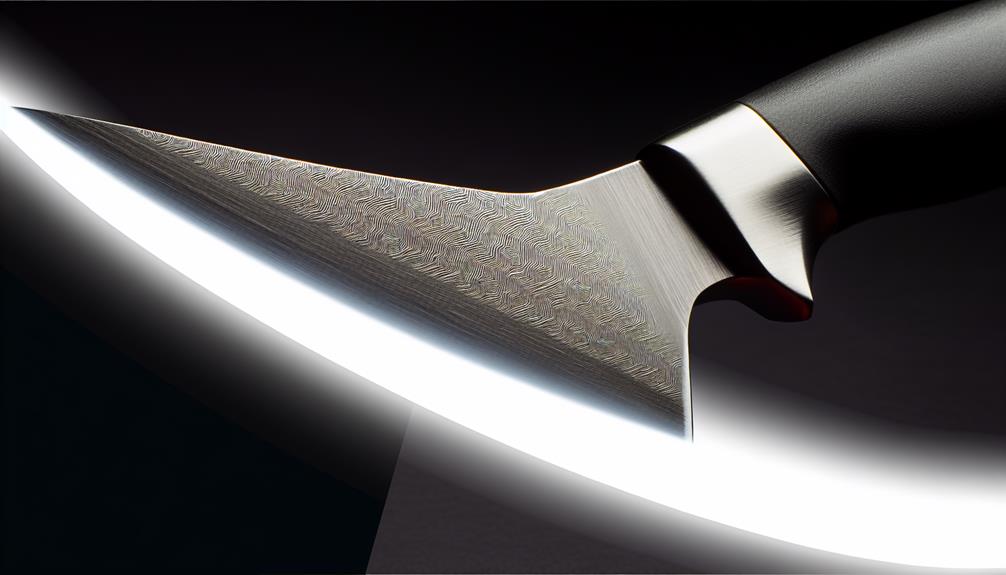
Carbon steel is known for its exceptional strength-to-weight ratio, making it suitable for various applications. Its durability and ability to meet international standards ensure consistent quality and performance.
These unique selling points set carbon steel apart from other materials and make it a popular choice in many industries.
Good quality
Renowned for its exceptional durability and unmatched performance, carbon steel stands out in the industry for its superior quality. When considering the good quality of carbon steel, several key factors contribute to its appeal:
- Heat Treatment: Carbon steel can undergo various heat treatments to modify its properties like hardness and strength.
- Welding Techniques: It is highly weldable, allowing for versatile fabrication options.
- Corrosion Resistance: Properly treated carbon steel exhibits good resistance to corrosion.
- Strength Properties: Known for its high strength-to-weight ratio, making it ideal for structural applications.
These factors collectively showcase why carbon steel is favored for its quality in a wide range of industrial applications.
Conforms to international standards
Conforming to stringent international standards, carbon steel showcases its reliability and consistency across various industrial applications. Its mechanical properties, including strength, toughness, and hardness, meet established criteria, ensuring high performance in demanding environments.
Carbon steel’s excellent corrosion resistance, when compared to other types of steel, makes it a preferred choice for structures exposed to harsh conditions. The heat treatment process further enhances its mechanical properties, allowing for customization based on specific project requirements.
Weldability considerations are integral, with carbon steel offering ease of welding while maintaining structural integrity. The material composition of carbon steel is well-defined, providing consistent quality and predictable behavior, which align with global standards for safety and performance.
Specialty services that the brand can offer
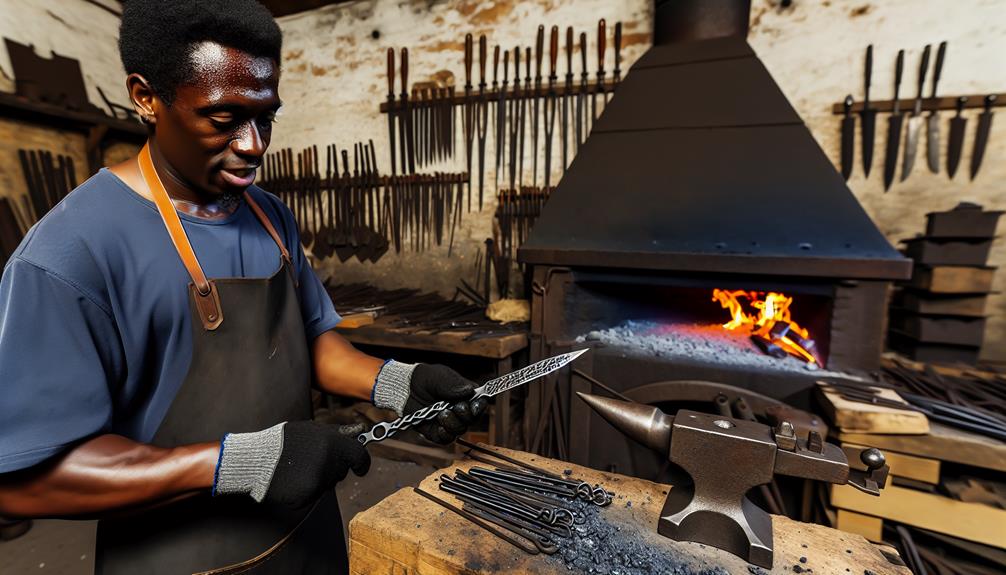
The brand offers a range of specialty services tailored to meet the unique needs of different projects. These services include customized solutions for specific metallurgical requirements, accurate order processing, and support for structural production needs.
Additionally, the brand guarantees fast delivery, expert follow-up on orders, and a high level of expertise in the field to provide extensive support to customers.
supporting customization
In response to the growing demand for personalized solutions in the market, our brand provides a range of specialty services that cater to customization needs. Whether you require specific dimensions, unique finishes, or tailored steel compositions, we offer a variety of options to meet your individual specifications.
Our commitment to excellence extends to the customization process, ensuring that each product is crafted with precision and care. To support your bespoke designs, we provide the following services:
- Customization options for dimensions and shapes.
- Personalized solutions for surface finishes and treatments.
- Tailored products with specific chemical compositions.
- Bespoke designs tailored to your project requirements.
With our focus on customization, we aim to deliver steel products that meet your exact needs and specifications.
Provision of all series of metallurgical products for specific projects
Diversifying its range of specialty services, the brand offers a wide selection of metallurgical products across all series to cater to specific project requirements. Understanding the critical role of metallurgical applications in various industries, the brand guarantees meticulous attention to detail in material sourcing and custom fabrication processes.
Whether the project demands high-strength steels, corrosion-resistant alloys, or specialized metal grades, the brand’s commitment to meeting industry standards is unwavering. By providing a thorough range of metallurgical products, the brand enables customers to access tailored solutions that align perfectly with their unique project specifications.
This dedication to precision and quality underscores the brand’s expertise in delivering materials that surpass expectations in diverse industrial applications.
Order accuracy
Broadening its range of specialty services, the brand guarantees precise order accuracy through meticulous quality control measures and streamlined processes. By focusing on order accuracy assessment, quality control, customer satisfaction, inventory management, and supply chain optimization, the brand assures a seamless experience for its customers. Here’s how they achieve it:
- Order accuracy assessment: Thorough checks at every stage of the ordering process.
- Quality control: Strict measures to maintain high product standards.
- Customer satisfaction: Prioritizing customer preferences and feedback.
- Inventory management: Effective tracking and restocking to prevent stockouts.
Through these strategies, the brand not only meets but exceeds customer expectations, fostering trust and loyalty within its community.
Supports structural production; provides fabrication of plate and tube structures, tanks, and pressure vessels
How does the brand excel in supporting structural production by offering fabrication services for plate and tube structures, tanks, and pressure vessels? Our brand stands out in providing high-quality welding techniques that guarantee the structural integrity of the final products. Through meticulous heat treatment processes, we enhance the material composition, resulting in improved corrosion resistance of the fabricated structures. Our expertise in maintaining structural integrity throughout the fabrication process guarantees the durability and reliability of the end products. Below is a comparison table showcasing how our fabrication services excel in these key areas:
| Key Aspect | Our Fabrication Services Offer |
|---|---|
| Welding Techniques | Advanced methods for strong joints |
| Corrosion Resistance | Specialized coatings and materials |
| Heat Treatment | Precise control for best properties |
| Structural Integrity | Rigorous quality checks for durability |
Fast delivery, follow up on orders/expertise in the field
By prioritizing efficient logistics and maintaining constant communication with clients, our brand guarantees swift delivery and meticulous follow-up on all orders, showcasing our expertise in the field of specialty services. To assure customer satisfaction, we provide the following services:
- Fast Delivery: Utilizing streamlined processes for quick order processing.
- Dedicated Customer Support: Offering technical support and guidance throughout the ordering process.
- Industry Expertise: Leveraging years of experience to provide tailored solutions.
- Order Tracking: Enabling clients to monitor their orders in real-time for transparency and peace of mind.
Through these specialized services, we aim to exceed expectations and deliver a seamless experience for our valued customers.
About the rest of Low Carbon Steel Pipe
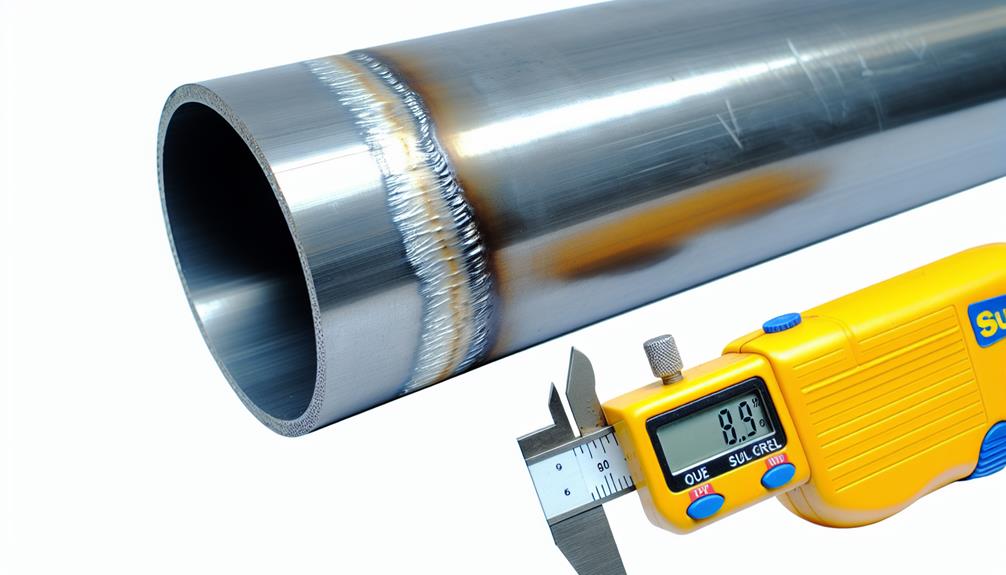
In the domain of mild carbon steel pipe, the remaining composition components play an essential role in determining the material’s properties and applications. Corrosion resistance is a critical consideration when evaluating low carbon steel pipes for various applications. The addition of certain elements such as chromium can enhance the pipe’s resistance to corrosion, making it suitable for use in environments prone to rust.
Welding techniques are also pivotal in working with low carbon steel pipes, as proper welding procedures can guarantee strong and durable joints. Heat treatment processes can further improve the pipe’s mechanical properties, enhancing its strength and ductility. Surface finishes, such as galvanized coatings, can provide additional protection against corrosion and wear.
purchase of low carbon steel pipe
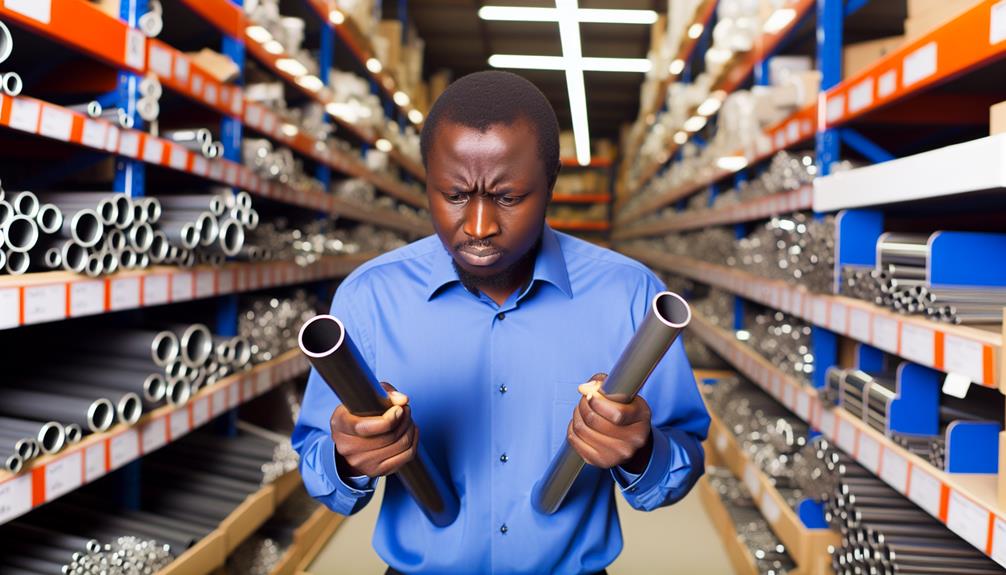
When considering the purchase of low carbon steel pipe, it is important to understand the various factors that impact its price. These factors include material quality, manufacturing processes, and market demand. Buyers should also be knowledgeable about how to evaluate and select the right low carbon steel pipe for their specific needs. This involves considering factors like size, thickness, and intended application. Achieving a balance between cost and quality is vital in ensuring that the purchased low carbon steel pipe meets performance requirements while staying within budget constraints.
This understanding will help buyers make informed decisions and source the most suitable low carbon steel pipe for their projects.
What factors affect the price of low carbon steel
Factors influencing the pricing of low carbon steel, particularly in the context of purchasing low carbon steel pipe, are multifaceted and important to understand for informed decision-making in the industry.
When considering the price of low carbon steel, several key factors come into play:
- Price factors, market trends: Fluctuations in raw material costs and market demand greatly impact pricing.
- Steel production, global demand: The overall production levels of steel and the global demand for low carbon steel influence prices.
- Economic impact, pricing strategies: Economic conditions and pricing strategies adopted by manufacturers affect the final cost.
- Material sourcing, supply chain: Efficient material sourcing and a well-managed supply chain can help control pricing.
Understanding these elements is important for dealing with the complexities of low carbon steel pricing in the market.
How to buy low carbon steel pipe
Efficient procurement of low carbon steel pipe necessitates a thorough understanding of material specifications and supplier selection criteria. When selecting pipes, consider factors like size, thickness, and end connections to make sure they meet project requirements.
Material specifications such as ASTM standards and grade classifications play an important role in determining the pipe’s quality and performance. Cost considerations should include not only the initial purchase price but also long-term maintenance and operational costs.
Evaluate various supplier options based on their reputation, reliability, and ability to meet delivery timelines.
Balancing price and quality
To guarantee maximum value when purchasing mild carbon steel pipe, careful consideration must be given to striking a balance between cost-effectiveness and quality standards. When buying low carbon steel pipe, the following factors should be taken into account:
-
Price comparison: Compare prices from different suppliers to make sure you are getting a competitive deal.
-
Quality assessment: Check for certifications and standards compliance to ensure the quality of the steel pipe.
-
Material durability: Evaluate the durability of the carbon steel to make certain it meets your project requirements.
-
Budget considerations: Set a budget and stick to it while ensuring quality is not compromised.
-
Performance evaluation: Assess how the carbon steel pipe will perform in your specific application to confirm it meets your performance expectations.
Conclusion
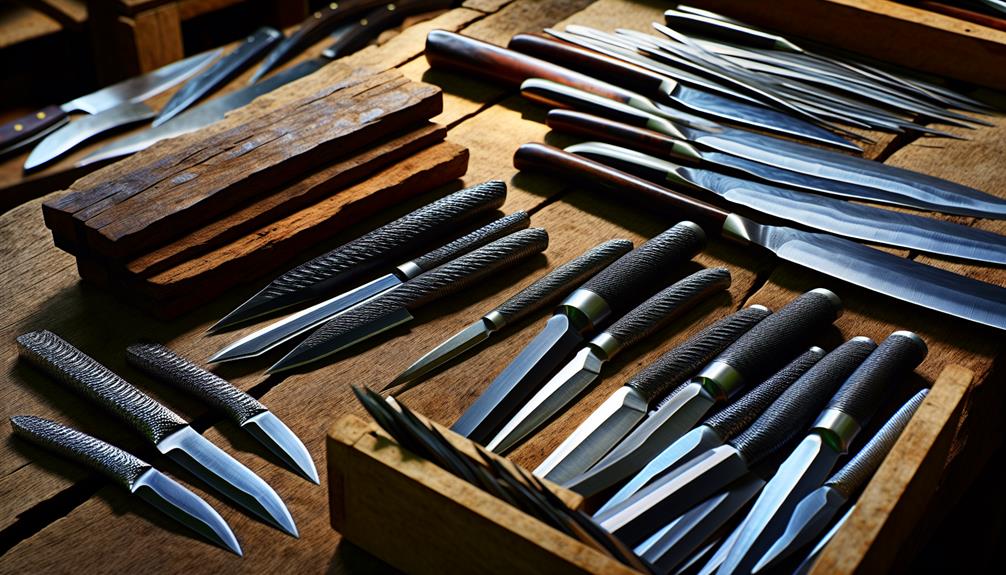
In wrapping up our exploration of carbon steel, it is evident that its unique properties and versatility make it an indispensable material in various industries. The benefits of durability that carbon steel offers, coupled with proper maintenance tips, guarantee its longevity and reliability in demanding applications. Additionally, the environmental impact of carbon steel is favorable compared to other materials, as it is recyclable and sustainable, aligning with modern eco-conscious practices.
From a cost-efficiency standpoint, carbon steel provides excellent value for money due to its long lifespan and robust nature, making it a preferred choice for many projects. Its versatile applications across construction, manufacturing, automotive, and culinary fields further highlight its adaptability and usefulness in diverse settings. Embracing carbon steel not only guarantees high performance but also contributes to a more sustainable and efficient industrial landscape. To sum up, the enduring appeal and practical benefits of carbon steel solidify its position as a cornerstone material in the modern world.
Frequently Asked Questions
Can Low Carbon Steel Be Easily Welded?
Low carbon steel can be easily welded using different welding techniques. Proper heat treatment is essential to prevent brittleness. Joint strength relies on the welding method and filler materials. Adequate welding equipment guarantees a successful weld.
Are There Any Environmental Benefits to Using Low Carbon Steel?
Utilizing low carbon steel can yield positive environmental impacts by reducing carbon footprint, supporting green building practices, and promoting sustainability. Its recyclability, energy efficiency, and conservation of resources make it a preferred eco-friendly option.
What Are the Potential Drawbacks of Using Low Carbon Steel in Certain Applications?
When considering low carbon steel for applications, drawbacks to note include limited strength for heavy-duty tasks, potential corrosion susceptibility without proper coatings, challenges with heat treatment modifications, reduced machinability, and lower impact resistance compared to higher carbon steels.
How Does the Cost of Low Carbon Steel Compare to Other Types of Steel?
When comparing the cost of low carbon steel to other types, factors like strength properties, corrosion resistance, machinability, and heat treatment options play a significant role. Understanding these aspects is important for making informed decisions in material selection.
Are There Any Specific Safety Precautions to Keep in Mind When Working With Low Carbon Steel?
In dealing with low carbon steel, adherence to safety precautions is paramount. Handling procedures must be followed meticulously, protective equipment worn, and ventilation requirements met. Training programs should educate workers on safe practices for working with this material.
Conclusion
To sum up, low carbon steel is a versatile and durable material with a wide range of uses in various industries. Its characteristics make it ideal for applications requiring strength and flexibility.
When purchasing low carbon steel, take into account the size and specialized services provided by the brand to guarantee the best quality product.
With its exceptional characteristics and uses, low carbon steel is a valuable material that can meet the needs of different projects. Invest in low carbon steel for reliable performance and long-lasting durability.


